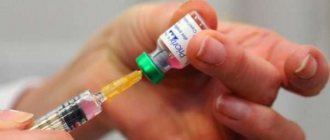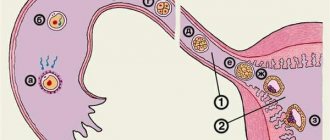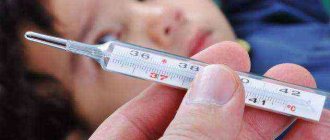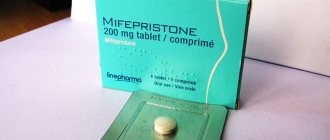How Mantoux is often given to children worries many parents. The first vaccination for children is given at approximately one year, twelve months after vaccination against tubercle bacilli (BCG and BCG-M vaccine). Vaccination against tuberculosis is carried out in the first days of the baby, in the maternity hospital. If vaccination has not been carried out, the test is performed twice a year. This is done due to the fact that a baby without vaccination is automatically classified as a risk group. In other cases, if BCG or BCG-M was performed, then the child must be given manta annually. The results of a previous allergy test do not affect the frequency of vaccination.
Indications
The Mantoux test is prescribed for the purpose of mass (screening) and individual diagnosis of tuberculosis. The study has several goals:
- Identification of children who were first infected with the tuberculosis bacillus - the appearance and intensification of the reaction to tuberculin, provoked by the infectious process, is called a “turn”.
- Selection of children and adolescents for vaccination or revaccination with BCG (a vaccine that includes live but weakened tuberculosis bacteria) - groups of children who did not receive the first vaccination at the age of 2 months and older are being studied. A decrease in immune activity is an indication for primary or repeated vaccination.
- Assessing the degree of infection of the population with Mycobacterium tuberculosis (MBT) is when a doctor uses a sample to evaluate a number of epidemiological indicators.
- Early verification of active tuberculosis - the presence of an infectious process is detected before the development of irreversible morphological changes in the child’s body.
- Identification of children with a hyperergic or dynamically increasing reaction to the Mantoux test.
The Mantoux test is used for the differential diagnosis of tuberculosis with a child’s allergic reaction to various foreign compounds, mainly of protein origin, including tuberculin. Using the technique, the doctor has the opportunity to evaluate the effectiveness of the treatment and, if necessary, make adjustments to prescriptions. For children at risk for MBT infection, tuberculin diagnostics are carried out 2 times a year.
It is indicated for people who are in contact with sick people and have not received anti-tuberculosis vaccination. The test is also performed in the presence of concomitant pathologies : diabetes mellitus, gastric or duodenal ulcers, chronic nonspecific respiratory diseases, tonsillitis, increased body temperature to low-grade levels (about +37.5 ° C) of unknown origin.
The determination of individual indications for performing the Mantoux test is carried out by a pediatrician together with a pediatric TB specialist.
Why is Mantoux vaccination needed?
The Mantoux test is also called the tuberculin test. As this name suggests, it is designed to determine whether the child’s body is infected with tuberculosis infection. In other words, this is an immune test that can only be done after the child reaches one year of age.
Tuberculosis is a chronic disease that is fatal. According to world statistics, this particular infection occupies a leading place in the list of diseases that kill the majority of those infected. The disease is spread by airborne droplets, that is, a healthy person becomes infected through communication or close contact with a sick person.
Many infected people live with this chronic disease for decades, since tuberculosis only affects the body with a weak immune system. In particular, it develops rapidly in people infected with HIV. In this case, you can only become infected from a patient whose disease is already in the active stage. If an infected person receives medical care within the first two weeks, he is no longer a danger to others.
A patient with tuberculosis experiences the following symptoms of the disease:
- if the lungs are damaged, a cough appears that does not stop for 3 weeks or more;
- there is pain in the chest area;
- There may be blood discharge when coughing;
- the body weakens greatly, the person gets tired quickly;
- loss of appetite, the person loses weight;
- temperature increase;
- increased sweating.
Execution technique
The Mantoux test is given to children in the vaccination room of a medical institution with mandatory adherence to the rules of asepsis and antisepsis aimed at preventing tissue infection during puncture with a needle. A nurse who has completed the appropriate specialization courses uses a small syringe to intradermally inject a tuberculin solution into the middle third of the inner surface of the forearm.
Technique for performing the Mantoux test
The skin is pre-treated with cotton wool or a napkin moistened with an antiseptic solution (medicinal alcohol), which is then applied after the injection. The localization of the injection is alternated every other year : Mantoux is given in the right hand, and the next year in the left hand.
The result is assessed by a doctor 72 hours after the injection, for which the diameter of the infiltrate and redness is measured with a special ruler.
Rules for mandatory prevention
As mentioned earlier, a tuberculin test, in the absence of prohibitions and for children who are not at risk, is performed annually. It is best to take the sample at the same time of year. As a rule, this is done in the autumn. For the first time, children need to have it no earlier than twelve months after birth. Otherwise, the reaction may not show an accurate result.
The tuberculin injection is administered subcutaneously using a syringe in a sitting position. The injection is made into the dorsum of the upper forearm. After inserting the syringe, a reddish lump immediately appears. Contact of the area where the injection was given with any liquid is prohibited. This is due to the fact that the seal, when in contact with any liquid, will change its color and characteristics. As a result, the results of the tuberculin test may become incorrect. In addition, experts do not recommend sticking an adhesive plaster over the injection site. Because of this, the seal begins to fog up and moisture appears. Mantu also cannot be scratched or rubbed.
Parents must carefully ensure that all rules are followed. Correct adherence to the recommendations directly determines the establishment of an accurate diagnosis, and if the disease is confirmed, the subsequent necessary treatment.
How often is it done?
The Mantoux test for screening diagnostic purposes is done once a year and repeated after 12 months.
Parents often ask their family doctor or pediatrician: when is the first Mantu given to a child? For the first time, tuberculin diagnostics is carried out at the age of 12 months. Then the manipulation is repeated once a year. Until the age of 16, Mantoux is done at school, then fluorography (x-ray examination of the chest organs) is used for screening diagnosis of tuberculosis.
How many times a year is the study conducted? All children are given Mantoux once every 12 months. It is believed that the study is best conducted in the fall. If a child belongs to a risk group, which is associated with a high probability of infection with Mycobacterium tuberculosis or the presence of concomitant pathology with decreased immune activity, then the study is carried out 2 times a year: in autumn and spring.
Expert opinion
Lyudmila Sokolova
Pediatrician, doctor of the highest category
Ask a Question
If there are individual indications, an unscheduled Mantoux test may be performed after a doctor’s prescription.
Flaws
The disadvantages of the Mantoux test include low specificity. After the administration of tuberculin, a delayed-type hypersensitivity reaction develops not only when a child is infected with tuberculosis. It can occur with allergies. A positive result also occurs after vaccination and revaccination with BCG.
Before performing the procedure, the doctor makes sure that there are no medical contraindications. In the following cases, Mantoux should not be given to a child:
- acute infectious pathology of any location in the body;
- skin diseases;
- child's age up to one year;
- chronic infectious diseases in the acute stage (relapse);
- quarantine introduced in a children's organized group due to an outbreak of infectious diseases (the test can be carried out after the quarantine is lifted).
More about contraindications
The manipulation is allowed after a period of at least 4 weeks after any vaccination.
In a small number of cases, side effects develop after tuberculin administration. They include headache, fever, inflammation of lymphatic vessels, nodes, and allergic reactions.
When is it necessary to skip the Mantoux test?
It is mandatory for a child to be vaccinated every year, as mentioned earlier. But there are still situations when it is impossible to use manta, as it can lead to serious complications. It is necessary to skip the mandatory annual preventive measure in the following cases:
- Skin diseases in the place where the injection is given.
- The presence of exacerbation of chronic ailments. In this case, a tuberculin test can be done no earlier than thirty days after complete recovery.
- Infectious diseases.
- Allergy during exacerbation.
- Neurological diseases.
- Quarantine in schools or preschool institutions.
During routine vaccination or revaccination with BCG and BCG-M. The test can be done only one and a half months after vaccination. If you have it done before the required period has passed, the mantu may show a false result.
If your child is tested without taking into account the presence of contraindications, this may lead to adverse consequences.
Reference materials (download)
| # | File | file size |
| 1 | All about the Mantoux test | 169 KB |
| 2 | Federal clinical guidelines for the diagnosis and treatment of latent tuberculosis infection in children. ROF.2015 | 374 KB |
| 3 | Laboratory research methods in the differential diagnosis of tuberculosis. 2006 | 849 KB |
| 4 | Algorithm laboratory. diagnosis and monitoring of treatment of drug-resistant pulmonary tuberculosis using rapid molecular methods. WHO. 2017 | 2 MB |
| 5 | Article. The results of improving the diagnosis and treatment of tuberculosis with multiplicity. doctor stable in the Republic of Sakha (Yakutia). 2019 | 278 KB |
| 6 | Physical methods for studying the health of a sick child. Educational and methodological manual.MZRB.2009 | 812 KB |
| 7 | If you refuse to perform a Mantoux test, clarifications of the Ministry of Health of the Russian Federation dated July 13, 2016 | 79 KB |











